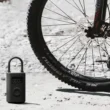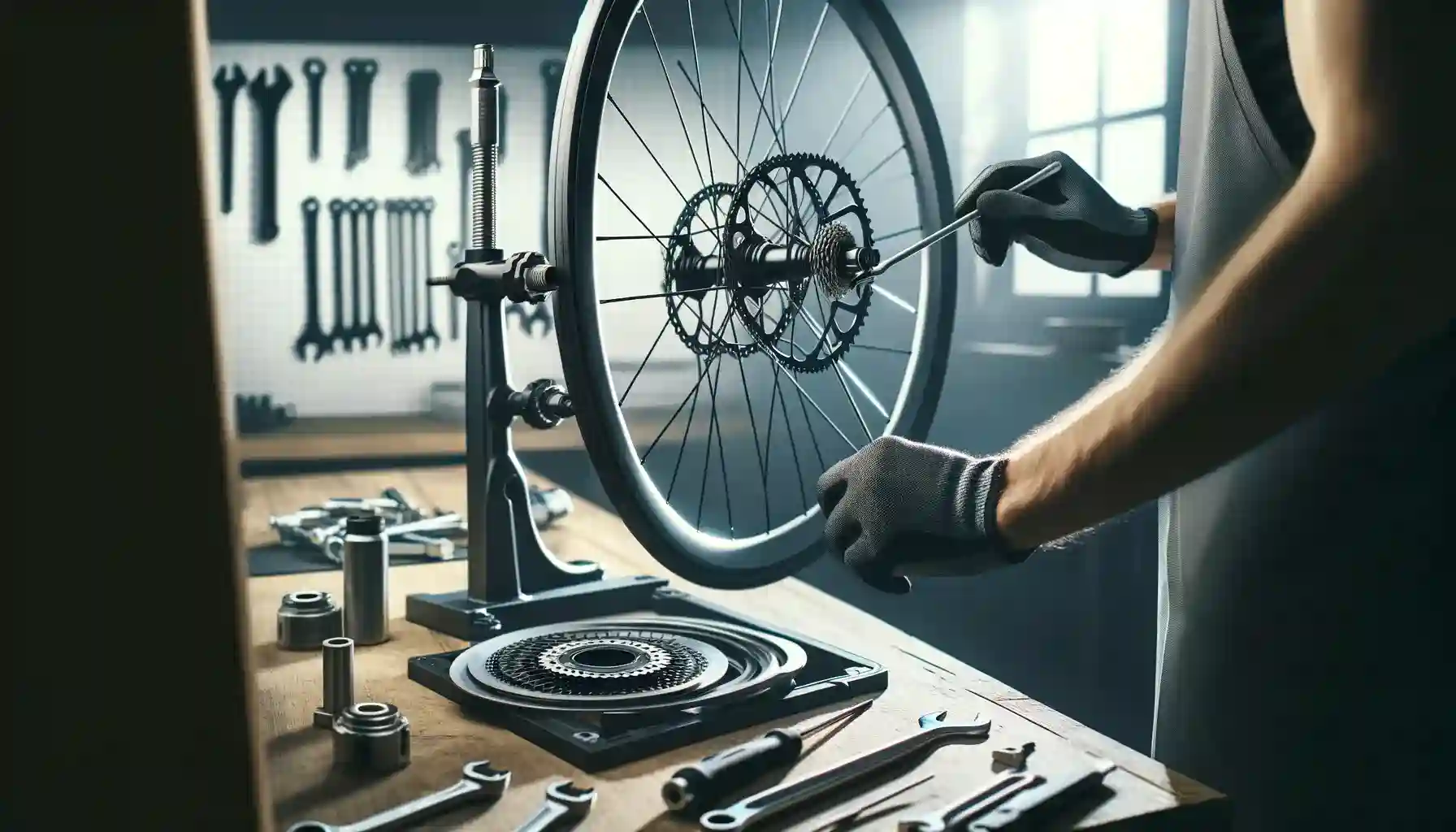Winter is here, and that means it’s time to gear up properly to enjoy cycling even on the coldest days. It’s not the time to park the bike; it’s the time to show that the cold doesn’t stop your passion for pedaling. Whether it’s commuting to work, cruising around the city, or for your training sessions, winter cycling has its own charm.
Tips on How to Combat the Cold and Enjoy Cycling in Winter
In this article, you’ll find practical tips to combat the cold and stay comfortable on your bike. Learn how to dress appropriately and discover how winter cycling can be a rewarding experience. Don’t let winter take away the pleasure of cycling!
1. Plan Ahead
Good planning is crucial, knowing what time to grab the bike and for how long. Proper planning can save you from setting out in freezing temperatures and allow you to enjoy a bit more of the sun’s warmth.
Try to head out around noon, between 12 and 2 PM, when the sun can provide more warmth, so you won’t feel as cold compared to early or late hours of the day. Consider the duration of your ride, as staying out too long can expose you to the cold.
Always carry extra clothing like a windbreaker, vest, neck gaiter, or gloves to protect yourself from the cold if the temperature starts to drop.
2. Get Prepared
Before heading out and enjoying the ride, prepare a good hot coffee or tea to raise your body temperature. Drinking something warm will raise your body’s temperature, giving you more strength to combat the cold.
Organize and think of all the items you’ll need for your outing, and don’t forget tools to repair any potential punctures or breakdowns.
3. The Clothing
Wearing the right gear is essential to protect ourselves from the cold during the winter months. However, the challenge comes when we start to sweat. The clothing should be breathable, retain body heat properly, and absorb sweat.
When we start to sweat, the clothing gets damp, which is the main cause of our body temperature dropping, making us feel colder than usual. Therefore, it’s important to wear good sweat-absorbent and breathable garments.
The first layer should be a thermal shirt, snug against the body and not made of cotton, which takes a long time to dry if it gets wet, making us feel damp and colder. The first layer can be either long or short-sleeved, though long sleeves are recommended to also maintain arm temperature.
The second layer should be warm but not overly thick, and breathable. It’s recommended that the inside of this layer be lined with wool or a thermal material.
The last layer should protect us from the cold and wind. Wind is a factor that makes us feel colder while cycling, as the wind chill is lower when we’re moving at high speeds. It’s important that this garment be windproof to stop the air from penetrating inside.
If you’re commuting to work by bike, it’s advisable to carry a change of clothes in your backpack or bag so you can dress appropriately for your activities upon arrival.
4. Accessories
Accessories are enhancements that make our cycling experience more comfortable. They play an important role in winter to properly protect the body parts most exposed to the cold, like the head, hands, feet, and face.
It’s crucial to properly equip our extremities, as they are the areas where body heat escapes the fastest. For the hands, wear good long gloves that protect the fingers from the cold while offering comfort when gripping the bike’s handlebars.
Another important accessory is shoe covers. Having cold feet is quite an unpleasant sensation, so it’s important to keep them protected and prevent the cold from penetrating.
A neck gaiter, under-helmet cap, or a hat are accessories that will provide additional body warmth and prevent heat from escaping through the head. At the same time, they keep our ears and nose well protected from the cold winter winds.
5. Nutrition
An important and often overlooked aspect of winter outings is maintaining good nutrition and hydration. Eating before and during the route is very important, especially in cold weather. When we’re cold, our body consumes more calories, so we need a higher caloric intake. It’s important to always carry some food, like energy bars or fruit. This is especially crucial for long or high-intensity routes.
Another aspect to consider in nutrition during cold days is hydration. Generally, we drink less water while cycling in winter, but our body needs to be well hydrated for our muscles to function properly and to prevent fatigue due to dehydration. We recommend drinking regularly, every 20 to 30 minutes, even when you’re not thirsty, and combine it with salts or isotonic drinks to replenish the salts and minerals lost through sweating.
6. Make Yourself Visible
Being visible is crucial all year round when cycling, but even more so during the winter months when there are fewer daylight hours and drivers are less aware of cyclists. Always keep the rear light on and wear visible and bright clothing to attract the attention of pedestrians or vehicles you may encounter.
Also read:
7. Bike Ready
It’s very important to have your bike in good condition before setting out, especially in winter. Make sure the brakes are functioning properly, check the tires, set the correct pressure for proper grip, and keep all components of the bike in good condition.
Maintaining your bike in good condition will ensure your safety while using it and prolong its lifespan. To help you prepare, here’s a list of 5 essential products to face the cold weather.
Top 5 Cycling Products for This Fall-Winter

As the crisp air of autumn transitions into the brisk chill of winter, cycling enthusiasts face new challenges on their rides. The key to maintaining performance and comfort during these colder months lies in the right gear. To help you navigate this seasonal shift, we’ve curated a list of the “Top 5 Cycling Products for This Fall-Winter.”
This selection is specifically tailored to enhance your cycling experience, providing warmth, safety, and efficiency. From innovative thermal wear to advanced lighting solutions, each product has been chosen for its quality and relevance to the needs of winter cyclists.
Whether you’re a seasoned rider or just starting out, these top picks will ensure you stay equipped and ready to embrace the beauty and challenges of cycling in the colder seasons.
1. Giro DND Gloves
The all-around gloves. Some can’t leave the house without makeup, and some can’t ride without gloves. Besides keeping our hands warm, they protect us in case of a fall. The DND gloves from Giro also allow us to touch our phone or GPS while wearing them. Available in Lime, Black, and many more colors.
2. Pissei Islandia Black Thermal Shirt
When heading out on a bike ride, whether on the road, gravel, or mountain bike, less is more. When it’s cold, it’s best to wear a thermal shirt to avoid jackets that breathe poorly and make us sweat more. A thermal shirt plus a long-sleeve jersey is the winning combination. Pissei’s also has a high neck, so you can also skip a neck gaiter. All advantages.
3. Rains Jacket Black
The Rains Jacket in black is the definitive choice for cyclists looking to face the weather in style and function. Its casual design is combined with carefully crafted features for cyclists, such as snap buttons on the neck, two external pockets with buttons, and an adjustable hood with a visor.
What sets it apart is its focus on comfort and ventilation, with air circulation holes in the back flap and ventilated eyelets under each armpit, ensuring optimal air circulation during your bike routes. Additionally, this jacket is highly water-resistant thanks to its ultrasonically welded seams and can withstand a water pressure of up to 3000 mm.
4. Kryptonite Avenue R-50
With fewer daylight hours, you’ll notice it’s important to see where you’re going, but perhaps more importantly, to be seen. The Kryptonite Avenue R-50 rear light has up to 50 lumens of intensity in its most powerful mode, and up to 11.25 hours of autonomy in the economic mode, still giving a power of 10 lumens.
It’s USB rechargeable, has a fixed base for easy installation and removal, can be clipped to a backpack or pants, and is water-resistant. What more could you ask for?
5. Elite Tuo Interactive Roller
If after all the options we’ve given you to go outside, you still prefer to stay at home, don’t worry, you can still ride your bike in the living room. The Elite Tuo Interactive Roller is the option for when you don’t want to face the cold, get wet, or deal with cars brushing past you at 50 centimeters.
This roller is compatible with Zwift and many other virtual environment systems. You can use it with a variety of bikes, including road bikes, mountain bikes, city bikes, and carbon bikes, with 130×135 mm quick-release hubs or 142×12 mm through-axle hubs.
It’s also compatible with 24″ to 29″ wheels. With the Elite Tuo Interactive, training at home becomes an effective and versatile experience for cyclists of all levels. Honestly, with this, you won’t feel like going outside.








